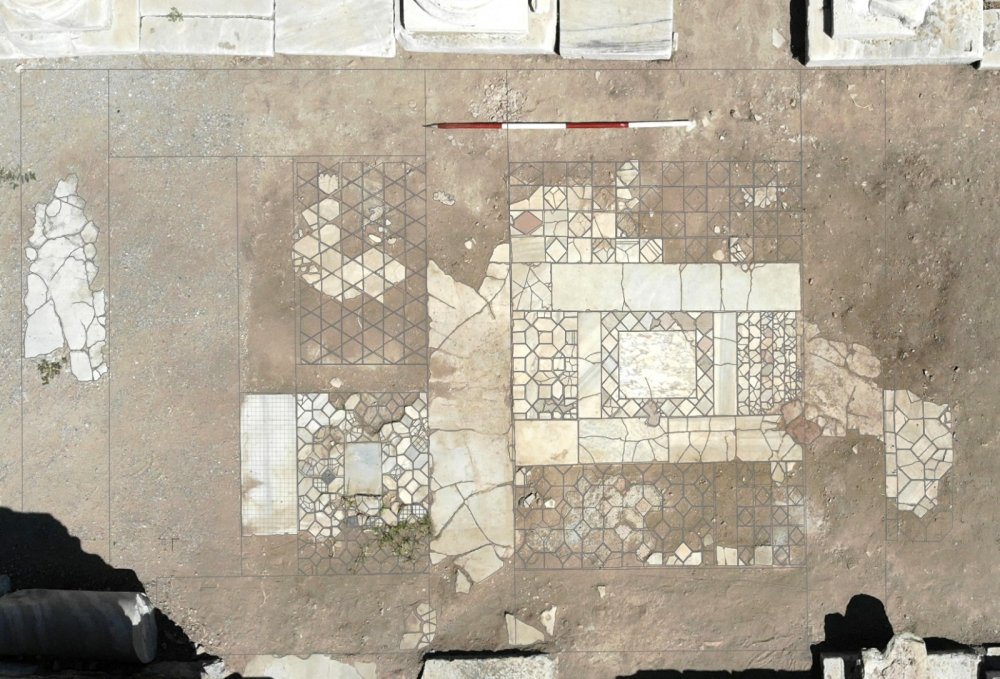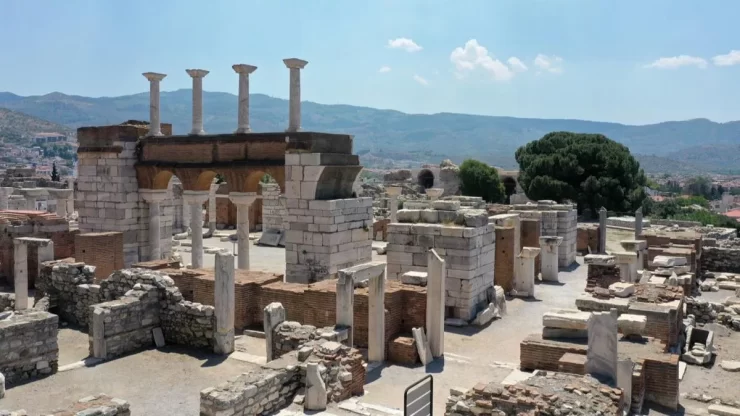The excavations carried out by the Directorate of Ephesus Museum since 1990 on Ayasuluk Hill, which is located in the center of Selçuk District of İzmir Province and known for many years as the last place where the Ancient City of Ephesus was founded, has completely changed the history of Ephesus.
With the permission of the Ministry of Culture and Tourism, with the support of the Turkish Historical Society and Izmir Metropolitan Municipality, Hatay Mustafa Kemal University Art History Department Lecturer Assoc. Dr. The excavations on Ayasuluk Hill, conducted under the direction of Sinan Mimaroğlu, continue to shed light on history.
After the 5-centimeter-high Mycenaean statuette, which was recently found by the excavation team and that made an impact in the international archeology world, a 12-square-meter floor covering from the Byzantine period, consisting of shaped marble pieces known as the “opus sectile” technique, was unearthed in the vicinity of St. John’s Church.
It is considered that the colored flooring, similar to those found in the ancient cities of Hierapolis and Laodicea in Denizli, dates back to the 12th or 13th century AD.
The excavation team announced to the world of archeology at the 6th International Mudanya Mosaic Symposium, held on 12-15 May, about the floor covering that proves the active use of the church in the region during the Middle Byzantine period.



Assoc. Dr. Sinan Mimaroğlu said to AA correspondent that a small part of the floor covering in the area was known before, but during the cleaning works, they realized that the area they considered as “opus sectile” spread over a wider area.
He stated that the mosaic was dated to the 12th or 13th century and the floor was prepared with a technique that involved putting together shaped pieces of marble.
Mimaroğlu informed that there is a mosaic dating back to the 6th century AD under the floor covering.
“A panel was unearthed with the work we did last year. We want the panel to be exhibited after its conservation. We think it was built during the reign of Justinian, that is, in the 6th century AD. We were already aware of the existence of this floor covering in the area around the baptistery. The panel in this shape was later covered with different marbles. This marble The decoration of its pieces with shapes and geometric patterns shows how monumental the church actually is.”
Stating that the marbles were brought from different geographies, as in Hagia Sophia, Mimaroğlu said, “During the excavations, we were aware of the existence of an opus in the northern section, but what we uncovered was an example that has not been until today. We had the opportunity to introduce it at the symposium. We hope that such important data will emerge as our work in the church continues. We think.” said.
